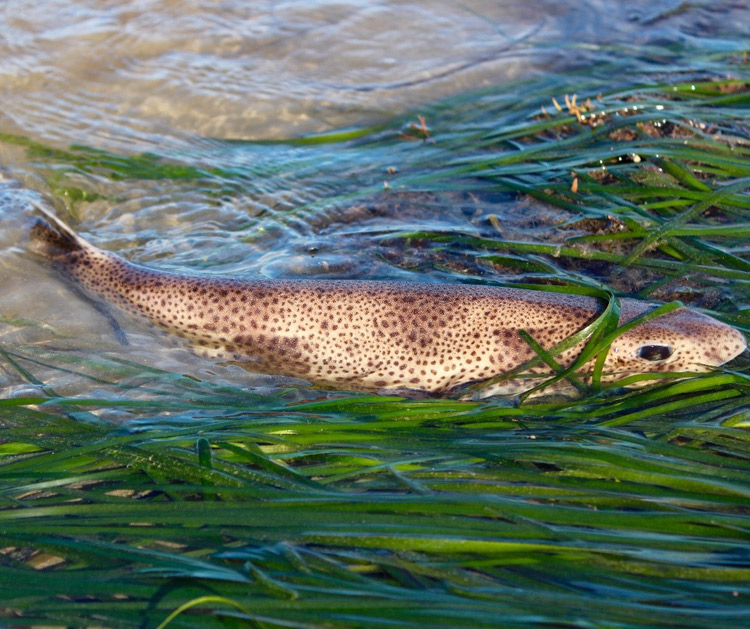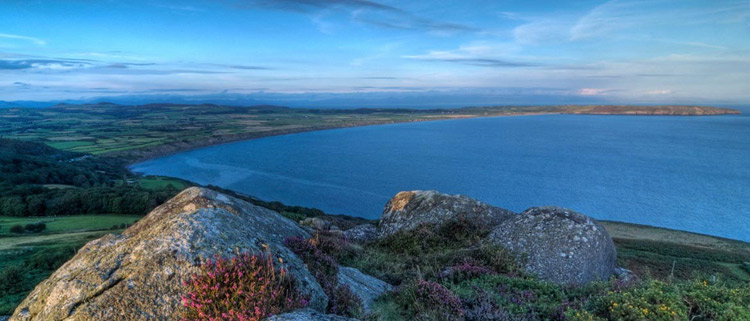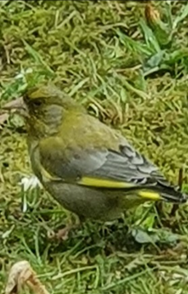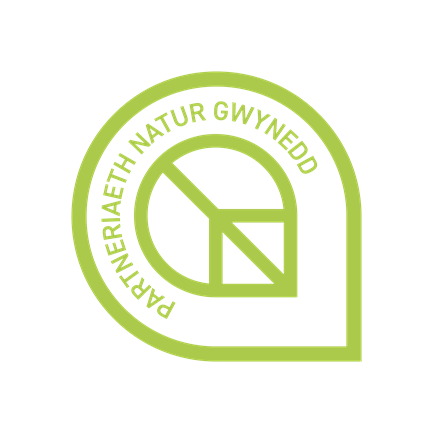Nature in Gwynedd
Gwynedd has a wealth of wildlife and a diversity of habitats. The beautiful coast of Pen Llŷn, with its soft cliffs and sandy beaches, is characterised by narrow lanes and distinctive cloddiau. In stark contrast are the windswept uplands which lead dramatically down into green valleys and remnant ancient woodlands. Our marine life is a rich variety of animals, including soft corals, sea anemones, fish, octopus and crabs which populate the reefs and seabed around our coast. Gwynedd’s coastal strip and abandoned slate quarries provide habitats for the chough, the rarest species of crow breeding in Britain. Pen Llŷn, where mink numbers are still thought to be relatively low is also an important area for the water vole. Gwynedd also has nine species of bat, including the rare lesser horseshoe bat, which has disappeared from most of its northern range in Britain.

What is the Partnership?
Gwynedd’s Local Nature Partnership is a new initiative which started in January 2020 to help halt the loss of biodiversity. It is built on the foundations of Gwynedd’s previous Local Biodiversity Action Plan (Natur Gwynedd) and is Gwynedd’s response to the Welsh Government’s Nature Recovery Action Plan. The partnership includes individuals, businesses, NGOs, community councils / groups, wildlife recorders and public organizations.
Current members include:
Cofnod (The Local Environmental records centre)
North Wales Wildlife Trust
Snowdonia National Park LNP
Ymgynghoriaeth Gwynedd Consultancy
Friends of Borth y Gest
Friends of Penygroes
Farmers Union Wales
Dyffryn Gwyrdd Partnership
Ogwen partnership
Rotary International
Buglife
Y Dref Werdd
Butterfly conservation
Bwyd Bendigedig Porthmadog/Incredible Edible Porthmadog
Cadw Cymru’n Daclus
Plantlife
Social Farms and gardens
Coed cadw
CADW
Llais y Goedwig

Our Aims
Gwynedd Nature Recovery Action Plan (NRAP)
The Gwynedd NRAP is in development and will be published in 2023. Its main objective is to strengthen the connections between communities and nature, and enhance the value of nature across the County.
- Raising awareness of the important habitats and species, which wish to be listed in the Gwynedd NRAP
- Developing and facilitating projects that promote and strengthen links between communities and schools with nature.
- Protect the habitats and species listed in the Gwynedd NRAP through practical measures such as improved management practices and restoration.
- Identifying and addressing key pressures affecting species and habitats especially Climate Change and Land use change.
- Creating habitat links and connectivity to increase resilience of species and habitats.

How are we going to achieve it?
We will achieve these aims through participating in projects already on the ground, which connect communities with nature and awareness raising by creating and participating in events and giving presentations in schools . Additionally, we will be creating projects specifically centred around enhancing biodiversity value across all habitats within Gwynedd. Through these projects, the partnership will develop a Nature Recovery Action Plan which will benefit both communities and nature. The priorities set within the Nature recovery action plan will then feed into improving the wellbeing of Gwynedd’s communities through biodiversity.
Highlights
There are various different species and habitats, unique to this county. They include:
Chough
Water Vole
Marsh Fritillary
White beam tree
Floating water plantain
Lesser Horseshoe bat
Manx Shearwater
Golden hair lichen
European River Otter
Mason Bee
Projects
Current projects include:
Meadow creation
Pond creation
Invasive species Blaenau Ffestiniog
Creating habitats for bats
Habitat corridors
Green schools
Ogwen Valley flood management scheme
Action for swifts in Caernarfon
Key Contact
Hywyn Williams - Local Nature Partnership coordinator
Pencadlys Cyngor Gwynedd
Stryd y Castell
Caernarfon
LL551SE
Phone: 07780 486549
Email:[email protected]
Website: gwynedd.llyw.cymru
Gwynedd is full of opportunities to help nature, and this is the perfect time to start!! A good starting point would be to head to the “Making Space for Nature” resources page- you will find tips on how individuals, groups and organisations can make space for nature and help provide vital habitats for plants and animals. You can also contact our LNP coordinator to see if they can put you in contact with any of the organisations, community groups or wildlife groups in your area.
Morfa Aber - This is located at Abergwyngregyn beach. Morfa Aber is a Local Nature Reserve, where there is a public bird hide. By sitting and relaxing in this bird hide, you can watch as flocks of curlew, wigeon and ducks fly by. If you’re lucky, you might also catch a glimpse of the kingfisher or otters as they feed in the freshwater pools.
Traeth lafan - A beach between Bangor and Llanfairfechan, this local nature reserve contains a mix of shoreline habitats. During low tide, there are 2,500 hectares of intertidal sand and mud flats to be seen. A number of conservational designation including Site of Special Scientific Interest , Special Protection Area, and Special Area of Conservation. An important area for a number of species, including Great Crested Grebes, oystercatchers, red breasted mergansers and goldeneye.
Morfa Madryn - In Llanfairfechan, there is a mixture of primarily wetland habitats- woodland, coastal pasture, fresh water pools and reed beds. Three bird watching hides where a variety of birds can be spotted.
Y Foryd - Situated to the South West of Caernarfon, Y Foryd is a partially enclosed intertidal bay on the Menai Strait. At low tide, 250 hectares of sand and mud habitats is exposed, becoming important feeding habitats for a number of native and migratory bird species, such as shellducks, , oyestercatchers, curlews, lapwings and large flocks of over 5,000 widgeon.
Lon Cob Bach - Situated in the middle of the historic town of Pwllheli. This nature reserve’s present landscape was formed by draining large tracts of land from the estuary of the Rhydhir river, when the Cob embankment was built in the 18th century. The town expanded to cover most of the reclaimed land, leaving behind wet pasture and salt marsh to the south of Lon Cob bach. To the North of the road, lies an area of intertidal mud and reed beds - an important habitat for a number of different species such as the kingfisher and otter.
Pen Y Banc - In Borth y gest- Coastal rocks, secluded sandy coves and mixed woodland. It is a popular site for families in the summer. A number of birds can be seen in the estuary- curlews, redshank and black- necked grebe in the winter, and flocks of sandwich terns can be seen in summer. In the mild climate, a variety of vegetation can be seen, ranging from coastal heath species such as gorse and heather, through to blackthorn, crab apple, birch and oak. There are a number of paths through the reserve, including the coastal path. You can gain access by the village church (SH 565 373) just south of the car park by the harbour.
Parc y Borth - On the road going into Borth y Gest, Parc Y Borth is situated high on a hillside above the sheltered bay and contains both oak woodland and wild flower meadows. The park has an extensive network of wooded paths which will lead you to the top of the hill, from where you can take in the views of the Glaslyn and Dwyryd estuaries, and round south to west past Harlech and Criccieth castles, and to the Llŷn Peninsula. In May, you might catch a glimpse of the pied flycatcher which nests here, or hear the drilling of woodpeckers.















